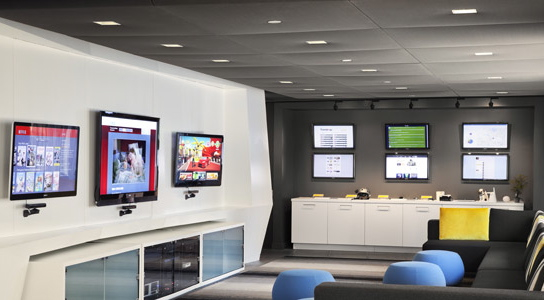IPG Media Lab Study Reveals Parameters for Ad Effectiveness
February 8, 2016
IPG Media Lab revealed the results of new research showing that that online ads that meet the Media Rating Council’s minimum threshold for viewability aren’t always effective. Although the MRC standards are a benchmark to determine when advertisers should have to pay for an ad, some agencies and marketers protest that the standards aren’t sufficient, an argument that seems borne out by the new IPG Media Lab study, which shows that, as an ad increases the metrics that define viewability, so does consumer recall.
According to The Wall Street Journal, MRC’s viewability standards consider a standard banner ad to be viewable if 50 percent of the pixels appear on-screen for at least one second; a video ad must have at least 50 percent of the pixels in view for at least two consecutive seconds; and a viewable rich media and large format ad must be 30 percent in view for one second.
MRC chief executive George Ivie says the guidelines “represent a minimum standard for the ‘opportunity to see’ the ad” rather than if the ad was “in fact actually seen or whether the ad’s message was actually received by the user.”
IPG Media Lab executive of consumer research study Kara Mannatt says the study, which was conducted with partners Cadreon (an Interpublic-owned programmatic buying unit) and Integral Ad Science, wasn’t done to challenge the current standards, “but rather to help advertisers create more effective ads given the viewability standards.”
The online survey, which included 10,000 participants, tested 189 different ad scenarios, with varying combinations of viewability levels, ad type, logo placement and other factors.
Participants were shown Web pages matching their typical consumption habits — while researchers also measured eye movement across some of the pages — and then filled out a survey to measure the branding impact. “Not surprisingly, the study found that the more visible the ad, the likelier the consumer was to notice it,” but that didn’t mean he or she internalized the message.
Ads that met the MRC bare standards (for pixels-in-view and amount of time) for viewability were recalled by only 17 percent of the survey participants, although 51 percent looked at them. For ads that exceeded the MRC standards, 74 percent looked at them and 32 percent recalled them.
The study found that the amount of time consumers have to see the ad was a bigger predictor of effectiveness than the percentage of pixels in view. Four seconds was the minimum amount of time for banner ads to have “at least a 25 percent chance of being recalled,” regardless of how much of the ad was visible. For larger format ads, the minimum time for 25 percent recall was at least seven seconds, and a video ad had the highest recall at seven seconds of 50 to 75 percent in view.


No Comments Yet
You can be the first to comment!
Sorry, comments for this entry are closed at this time.